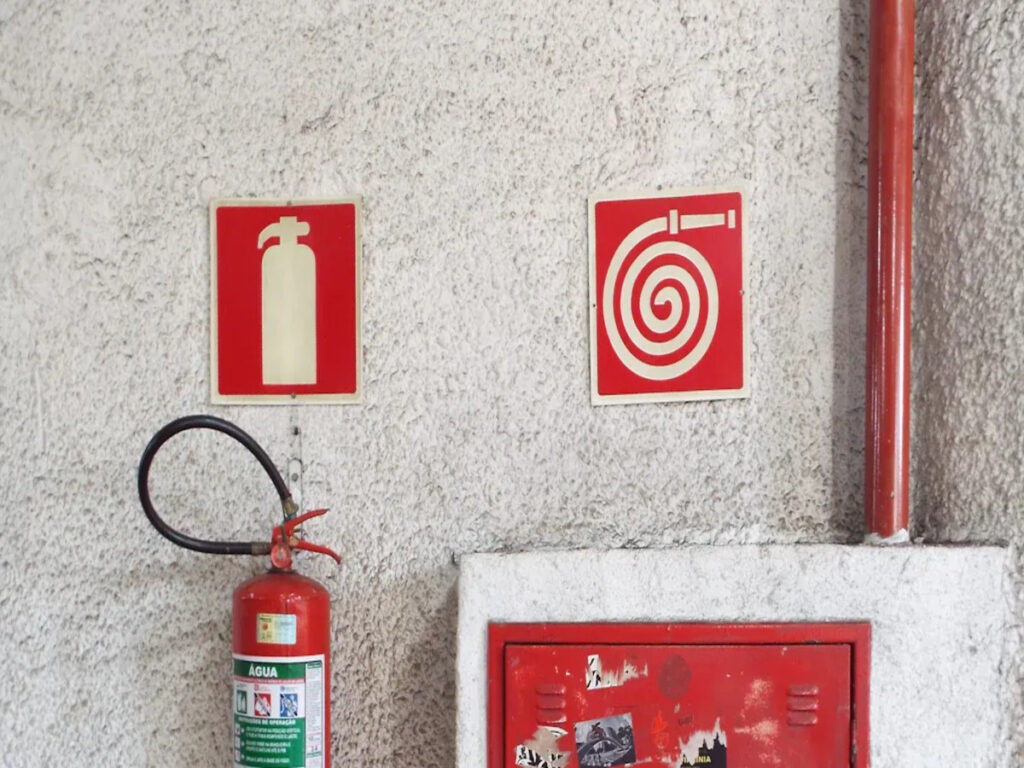
Los conos de naranja de plástico tradicionales juegan un papel vital en la seguridad vial, pero a menudo se quedan cortos en la gestión dinámica del tráfico. La mala visibilidad durante el clima adverso o las condiciones de poca luz puede hacerlos ineficaces. El daño y el desplazamiento frecuentes también crean desafíos para garantizar una seguridad constante.. Estas limitaciones exigen soluciones más inteligentes.
Soluciones IoT Traiga un enfoque revolucionario para la gestión del tráfico. Habilitando el monitoreo en tiempo real y el análisis predictivo, mejoran la seguridad y la eficiencia. Ciudades como Los Ángeles ya han reducido los tiempos de viaje significativamente con los sistemas impulsados por IoT. En Dubai, El mantenimiento predictivo utilizando IoT evitó numerosos cierres de carreteras y accidentes. Estos avances muestran el potencial de IoT para transformar cómo manejas el tráfico y protege la vida..
¿Qué son los conos de tráfico impulsados por IoT??

Definición de conos de tráfico impulsados por IoT
Conos de tráfico impulsados por IoT son una actualización innovadora de los conos de plástico de naranja tradicional. Estos conos de tráfico integran tecnologías avanzadas como sensores, comunicación inalámbrica, y análisis de datos para mejorar la seguridad vial y la gestión del tráfico. A diferencia de los conos estándar, Las versiones habilitadas para IoT monitorean activamente su entorno y se comunican con sistemas de transporte inteligentes. Proporcionan actualizaciones en tiempo real sobre el flujo de tráfico, Condición de la carretera, y peligros potenciales. Esto los convierte en un componente vital de los sistemas de gestión de tráfico inteligente.
Combinando infraestructura física con inteligencia digital, Los conos de tráfico basados en IoT mejoran la eficiencia del monitoreo del tráfico. También juegan un papel clave en los sistemas de transporte inteligente al permitir respuestas más rápidas a accidentes o congestión. Estos conos inteligentes no son solo herramientas para dirigir el tráfico; Son participantes activos en la creación de carreteras más seguras y eficientes..
La seguridad comienza con las herramientas adecuadas. Conos de tráfico de Optsigns Ofrezca la solución perfecta para cualquier carretera, zona de construcción, o evento, Asegurar una experiencia más segura para trabajadores y visitantes por igual.
Características clave de los conos de tráfico impulsados por IoT
Sensores para monitorear el tráfico y las condiciones ambientales
Los conos de tráfico impulsados por IoT vienen equipados con sensores que rastrean varios parámetros. Estos incluyen el flujo de tráfico, Condiciones de la superficie de la carretera, y factores ambientales como la temperatura o la visibilidad. Por ejemplo:
- Los sensores detectan cambios en los patrones de tráfico, tales como desaceleraciones repentinas o accidentes.
- Monitorean las condiciones de la carretera, Alertar sistemas de peligros como parches o escombros helados.
- Los sensores ambientales ajustan la visibilidad del cono en función del clima o la iluminación.
Este monitoreo constante garantiza que los sistemas de transporte inteligentes reciban precisos, datos en tiempo real.
Conectividad inalámbrica para la comunicación en tiempo real
Conectividad inalámbrica Permite que los conos impulsados por IoT se comuniquen con señales de tráfico inteligentes, sensores de carretera, y otros dispositivos. Esta característica permite una integración perfecta en sistemas de transporte inteligentes. Por ejemplo, Los conos de seguridad plásticos pueden enviar alertas a los centros de gestión del tráfico sobre conos de tráfico desplazados o condiciones peligrosas. También pueden sincronizarse con letreros de carretera inteligente para proporcionar a los conductores información actualizada. Esta conectividad garantiza que la gestión del tráfico se vuelva más dinámica y receptiva.
Análisis de datos para sistemas de gestión de tráfico inteligente
Conos impulsados por IoT recopilan grandes cantidades de datos, que se analiza para optimizar el flujo de tráfico y mejorar la seguridad. El análisis de datos ayuda a identificar patrones, tales como áreas de alto riesgo o tiempos de congestión pico. Esta información respalda la gestión de tráfico inteligente al habilitar una mejor toma de decisiones.. Por ejemplo, Los conos de seguridad plásticos pueden sugerir ajustes al flujo de tráfico o estrategias de colocación. Esto reduce la congestión y mejora la eficiencia general de los sistemas de transporte inteligente.
¿Cómo funcionan los conos de tráfico impulsados por IoT??

Recopilación y intercambio de datos en tiempo real
Monitoreo del estado del cono y las condiciones de la carretera
Uso de conos de tráfico impulsados por IoT Recopilación de datos en tiempo real para monitorear su estado y las condiciones de la carretera circundantes. Los sensores integrados en estos conos rastrean su ubicación, visibilidad, e integridad estructural. También detectan factores ambientales como la temperatura, humedad, y condiciones de la superficie de la carretera. Por ejemplo, Si un cono de carretera está desplazado o dañado, el sistema identifica inmediatamente el problema. Esto asegura que reciba actualizaciones precisas sobre los conos.’ funcionalidad y estado de la carretera.
Enviar alertas a los sistemas de gestión del tráfico
Estos conos de seguridad plásticos se comunican directamente con los sistemas de gestión de tráfico inteligente.. Cuando detectan riesgos como parches helados o escombros, Envían alertas en tiempo real a los centros de control de tráfico. Esto le permite responder rápidamente a los peligros potenciales. Las alertas también pueden notificarle sobre la congestión o accidentes del tráfico, habilitando la toma de decisiones más rápida. Proporcionando información de tráfico en tiempo real, Estos conos de seguridad plástica ayudan a reducir los riesgos y mejorar la seguridad vial..
Integración con sistemas de gestión de tráfico inteligente
Sincronización con semáforos y sensores de carreteras
Los conos impulsados por IoT se integran perfectamente con las señales de tráfico adaptativas y los sensores de carreteras. Se sincronizan con los semáforos para optimizar el flujo de tráfico y reducir la congestión. Por ejemplo, Cuando los conos de seguridad de plástico detectan tráfico pesado en un área específica, Pueden ajustar los horarios de la señal para aliviar el flujo. Esta integración asegura que el monitoreo del tráfico se vuelva más eficiente y dinámico.
Comunicación con vehículos autónomos
Vehículos conectados confiar en comunicación de vehículo a infraestructura navegar de forma segura. Los conos impulsados por IoT juegan un papel crucial en este proceso. Proporcionan información de tráfico en tiempo real a vehículos autónomos., Alertarlos sobre los peligros o los cambios en las condiciones de la carretera. Esto asegura que estos vehículos puedan tomar decisiones informadas., Mejorar la seguridad general del tráfico.
Mejora de la seguridad vial a través de soluciones IoT
Alertas en tiempo real para conductores y trabajadores de la carretera
IoT Solutions mejore la seguridad vial entregando alertas en tiempo real a los conductores y trabajadores de la carretera. Letreros de carretera inteligentes, Integrado con los sistemas IoT, Proporcionar actualizaciones dinámicas sobre condiciones y peligros de la carretera. Estas alertas ayudan a los conductores a evitar accidentes y a mantener a los trabajadores de carretera seguros durante las actividades de construcción o mantenimiento.
Visibilidad adaptativa en el clima con poca luz o adversa
Los conos impulsados por IoT mejoran la visibilidad en condiciones desafiantes. Los sensores ajustan el brillo de Luces LED en los conos basados en el medio ambiente. Por ejemplo, durante clima o por la noche, Los conos de seguridad de plástico se vuelven más visibles para los conductores. Esta visibilidad adaptativa reduce la probabilidad de accidentes y garantiza caminos más seguros.
Los conos de tráfico impulsados por IoT están transformando la gestión del tráfico. Combinando el seguimiento en tiempo real, vehículos conectados, y sistemas inteligentes de gestión de tráfico, crean caminos más seguros y eficientes para todos.
Beneficios de los conos de tráfico impulsados por IoT
Se mejoró la seguridad vial
Visibilidad mejorada y detección de riesgos
Los conos de tráfico impulsados por IoT mejoran significativamente la seguridad vial al mejorar la visibilidad y la detección de riesgos. Equipado con sensores, Estos conos de plástico ajustan su brillo en tiempo real para garantizar que permanezcan visibles en condiciones climáticas de poca luz o adversa. Esta característica reduce el riesgo de accidentes causados por poca visibilidad. Además, Los conos de plástico detectan riesgos como parches helados o desechos e inmediatamente alerta a los sistemas de gestión de tráfico. Estas capacidades aseguran carreteras más seguras tanto para conductores como para trabajadores de la carretera..
Mejorar su gestión de tráfico con Conos de tráfico de Optsigns. Diseñado para la máxima visibilidad y longevidad, Son una inversión inteligente en seguridad y eficiencia para cualquier zona de construcción o evento..
Prevención de accidentes a través de alertas en tiempo real
Las alertas en tiempo real de los conos de tráfico impulsados por IoT juegan un papel crucial en la prevención de accidentes. Estas alertas:
- Habilitar informes inmediatos de accidentes.
- Notifique a las autoridades relevantes por una respuesta de emergencia más rápida.
- Use análisis de datos en tiempo real para mejorar la gestión del tráfico.
Abordando los peligros potenciales de inmediato, Estos conos de plástico lo ayudan a evitar accidentes y mantener un flujo de tráfico suave.
Gestión de tráfico optimizada
Ajustes de flujo de tráfico dinámico
Las soluciones IoT permiten ajustes dinámicos al flujo de tráfico mediante el análisis de datos en tiempo real. Los sensores en los conos monitorean los patrones de tráfico y las condiciones de la carretera, Proporcionar sistemas de transporte inteligentes con ideas procesables. Por ejemplo, Cuando ocurre la congestión, El sistema puede ajustarse señales de tráfico o sugerir rutas alternativas. Esto garantiza un mejor flujo de tráfico y reduce los retrasos.
Reducción de la congestión en las zonas urbanas
Los conos de tráfico impulsados por IoT contribuyen a la reducción de la congestión en las áreas urbanas mediante la optimización de las soluciones de gestión del tráfico. La siguiente tabla resalta los beneficios medibles:
| Beneficio | Descripción | Resultado medible |
|---|---|---|
| Monitoreo en tiempo real | Los sensores detectan cambios en el flujo de tráfico y las condiciones de la carretera. | Mejor seguridad y congestión reducida. |
| Respuesta de incidentes mejorada | Alertas instantáneas a los centros de control de tráfico para accidentes o desacelaciones. | Despliegue más rápido de servicios de emergencia. |
| Optimización del flujo de tráfico | Analiza datos para identificar cuellos de botella y sugerir rutas alternativas. | Tiempos de inactividad reducidos por 40% En Pittsburgh. |
Estas características aseguran que los sistemas de tráfico urbano funcionen de manera eficiente, Incluso durante las horas pico.
Costo y eficiencia operativa
Monitoreo automatizado Reducción de esfuerzos manuales
Los conos de tráfico impulsados por IoT automatizan las tareas de monitoreo, Reducción de la necesidad de intervención manual. La recopilación de datos en tiempo real le permite rastrear el estado del cono, Condición de la carretera, y flujo de tráfico sin desplegar personal. Esta automatización ahorra tiempo y recursos al tiempo que garantiza un monitoreo constante.
Tiempos de respuesta de emergencia más rápidos
La optimización del vehículo de emergencia se vuelve más eficiente con los conos impulsados por IoT. Proporcionando información de tráfico en tiempo real, Estos conos de plástico ayudan a los vehículos de emergencia a navegar áreas congestionadas rápidamente. Los tiempos de respuesta más rápidos salvan vidas y minimizan las interrupciones. Esta eficiencia hace que las soluciones de IoT sean una valiosa adición a los sistemas de transporte inteligente..
Los conos de tráfico basados en IoT combinan tecnología avanzada con aplicaciones prácticas. Mejoran la seguridad, optimizar el flujo de tráfico, y mejorar la eficiencia operativa, haciéndolos indispensables para la gestión moderna del tráfico.
Aplicaciones del mundo real de conos de tráfico impulsados por IoT
Zonas de construcción
Asegurar la seguridad de los trabajadores y el flujo de tráfico
Los conos de tráfico impulsados por IoT juegan un papel fundamental en las zonas de construcción al garantizar la seguridad de los trabajadores y el mantenimiento del flujo de tráfico suave. Estos conos monitorean las condiciones de tráfico en los sistemas de gestión del tráfico en tiempo real y alerta sobre ralentizaciones o accidentes repentinos. Por ejemplo:
- Los conos habilitados para IoT detectan cambios en los patrones de tráfico y notifiquen a las autoridades inmediatamente.
- Conos inteligentes envían alertas a los conductores a través de letreros de carretera inteligente, Reducción de riesgos para los trabajadores.
- Sistemas impulsados por IA use data from these cones to respond quickly to incidents, minimizar las interrupciones.
Proporcionando información de tráfico en tiempo real, these plastic cones help you create safer environments for workers and drivers alike.
Monitoring Equipment and Cone Placement
IoT-enabled traffic cones also monitor equipment and cone placement in construction zones. Sensors embedded in these plastic cones track road changes and traffic conditions. They send updates to AI-based traffic management systems, allowing you to make informed decisions. Por ejemplo, Si un cono de carretera está desplazado o dañado, the system receives an immediate alert. This ensures proper cone placement and enhances safety. Además, these plastic cones help alleviate congestion by facilitating dynamic adjustments to traffic flow.
Sitios de accidentes
Alerting Drivers to Hazards
En sitios de accidentes, IoT-driven traffic cones improve safety by alerting drivers to potential hazards. These cones detect debris, damaged vehicles, u otros peligros y comunicar esta información a los sistemas de gestión del tráfico. Las señales de carretera inteligentes luego muestran advertencias a los conductores que se acercan, Ayudándoles a navegar de manera segura. Este enfoque proactivo apoya la prevención de accidentes y reduce la probabilidad de colisiones secundarias.
Coordinando equipos de respuesta a emergencias
Los conos impulsados por IoT también ayudan a coordinar equipos de respuesta a emergencias. Proporcionando información de tráfico en tiempo real, Ayudan a los respondedores a alcanzar los sitios de accidentes más rápido. Los vehículos conectados se benefician de estos datos, Como pueden ajustar sus rutas para evitar retrasos. Esta coordinación garantiza tiempos de respuesta más rápidos, Salvar vidas y minimizar las interrupciones del tráfico.
Sistemas de tráfico urbano
Apoyo a las iniciativas de Smart City
En áreas urbanas, Los conos de tráfico impulsados por IoT admiten iniciativas de ciudades inteligentes al integrarse con sistemas de transporte inteligentes. Estos conos de tráfico de plástico monitorean el tráfico en sistemas de gestión en tiempo real y alerta sobre ralentizaciones o accidentes. Las ciudades que usan esta tecnología han informado un mejor flujo de tráfico y una congestión reducida. Por ejemplo:
- Los conos habilitados para IoT proporcionan datos para optimizar los horarios de las señales de tráfico.
- Los vehículos conectados usan esta información para navegar de manera eficiente.
Esta integración hace que los sistemas de tráfico urbano sean más adaptativos y eficientes..
Reducir los atascos con soluciones IoT
Los conos de tráfico impulsados por IoT reducen los atascos de tráfico al permitir ajustes dinámicos al flujo de tráfico. Los sensores en estos conos de tráfico de plástico analizan los patrones de congestión y sugieren rutas alternativas. Estos datos ayudan a los vehículos conectados y los sistemas de gestión del tráfico a trabajar juntos para aliviar los cuellos de botella.. Como resultado, Experimenta los viajes más suaves y menos retrasos en las zonas urbanas ocupadas..
Los conos de tráfico impulsados por IoT están transformando la forma en que gestiona las zonas de construcción, sitios de accidentes, y sistemas de tráfico urbano. Su capacidad para proporcionar información de tráfico en tiempo real y soportar vehículos conectados garantiza carreteras más seguras y eficientes.
Desafíos en la implementación de conos de tráfico impulsados por IoT
Barreras financieras
Altos costos de inversión inicial
La implementación de conos de tráfico impulsados por IoT requiere una inversión inicial significativa. Sensores, cámaras, y la infraestructura de procesamiento de datos son componentes esenciales. Estas tecnologías aseguran que los conos de tráfico de plástico se integren a la perfección con los sistemas de transporte inteligentes. Sin embargo, Los costos iniciales pueden ser un obstáculo para muchas ciudades u organizaciones..
| Aspecto | Detalles |
|---|---|
| Costos iniciales | Inversión inicial significativa para sensores, cámaras, e infraestructura de procesamiento de datos. |
| Ahorros operativos | Ahorros a largo plazo de la congestión reducida, menor consumo de combustible, y disminución del mantenimiento. |
| Economic Growth | Enhanced productivity and attractiveness of cities due to improved traffic flow. |
While the initial costs are high, the long-term benefits outweigh them. Reduced congestion and accident prevention lead to lower fuel consumption and maintenance costs. These savings make IoT-driven traffic management solutions a worthwhile investment.
Ongoing Maintenance and Upgrades
IoT-driven cones require regular maintenance to ensure optimal performance. Sensors and wireless connectivity components need periodic updates. Without proper upkeep, the plastic traffic cones may fail to provide accurate data to intelligent transportation systems. Allocating resources for maintenance ensures the plastic traffic cones remain reliable and effective.
Technical and Infrastructure Challenges
Ensuring Reliable Connectivity
Los conos de tráfico basados en IoT se basan en una conectividad inalámbrica estable para funcionar de manera efectiva. En áreas con mala cobertura de red, Mantener la comunicación en tiempo real se vuelve desafiante. La conectividad confiable es crucial para los conos de tráfico de plástico para compartir datos con sistemas de control de tráfico y sistemas de transporte inteligentes. Infraestructura de red en expansión, como 5GRAMO, puede abordar este problema y mejorar la confiabilidad del sistema.
Integrarse con los sistemas de gestión de tráfico existentes
La integración de los conos basados en IoT con los sistemas de gestión de tráfico existentes puede ser complejo. Los sistemas heredados pueden carecer de compatibilidad con las tecnologías modernas de IoT. Esto crea desafíos para lograr una comunicación perfecta entre dispositivos.. La actualización de los sistemas obsoletos y garantizar la compatibilidad con los sistemas de transporte inteligentes es esencial para una integración exitosa.
Preocupaciones de privacidad y seguridad
Proteger los datos de las amenazas cibernéticas
Los conos de tráfico basados en IoT recopilan y transmiten grandes cantidades de datos. Esto los convierte en objetivos potenciales para ataques cibernéticos. Proteger estos datos es fundamental para mantener la integridad de los sistemas de control de tráfico. Implementación de medidas sólidas de ciberseguridad, tales como cifrado y firewalls, Ayuda a salvaguardar la información confidencial.
Cumplimiento de las regulaciones de privacidad
Las soluciones de IoT deben cumplir con las regulaciones de privacidad para proteger los datos del usuario. Sistemas de gestión de tráfico Información del proceso de vehículos conectados y otros dispositivos. Asegurar el cumplimiento de leyes como GDPR o CCPA evita el mal uso de los datos personales. La adherencia a estas regulaciones genera confianza y garantiza el uso ético de las tecnologías IoT.
Abordar estos desafíos es esencial para la implementación exitosa de conos de tráfico impulsados por IoT. Superando el financiero, técnico, y barreras de privacidad, Puede desbloquear todo el potencial de los sistemas de transporte inteligentes.
Los conos de tráfico impulsados por IoT están remodelando la seguridad vial y la gestión del tráfico. Integrando el monitoreo en tiempo real, visibilidad adaptativa, y comunicación perfecta, Estos conos de tráfico de plástico mejoran la seguridad y la eficiencia en las carreteras modernas.. Sin embargo, Desafíos como los altos costos de implementación, compatibilidad con la infraestructura existente, y se deben abordar las preocupaciones de privacidad para desbloquear su máximo potencial.
Avances futuros, como la comunicación de vehículos a todo y todo el semáforo inteligente, prometen mejoras aún mayores. Estas innovaciones reducirán los accidentes, optimizar el flujo de tráfico, y apoyar la integración de vehículos autónomos. A medida que la tecnología IoT evoluciona, Los conos de plástico naranja continuarán desempeñando un papel fundamental en la creación de carreteras más seguras e inteligentes.



















